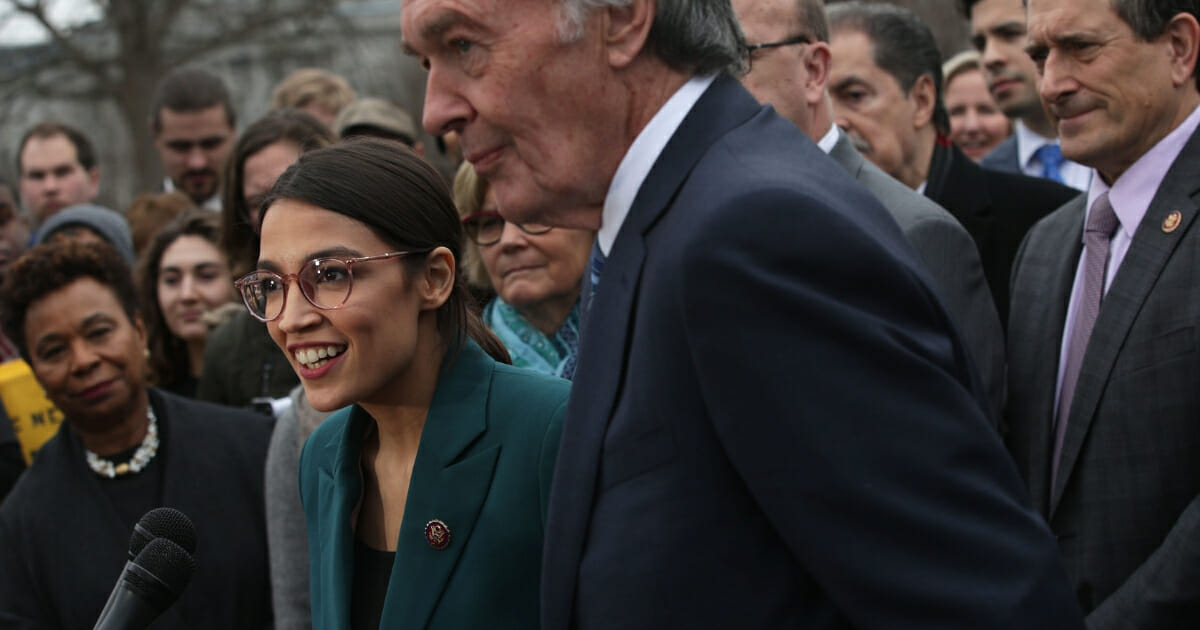
Democrats' Green Energy Crusades Are Always Catastrophic
As the march toward the 2020 presidential election begins to pick up steam, Democratic candidates are stumbling over themselves to embrace the next “fresh” and “exciting” big-ticket item on the progressive agenda. Today, that means renewable energy subsidies and a whole lot of them. Sen. Kamala Harris became the latest candidate to proclaim her love for government-mandated renewable energy production. She did so by courageously falling in line with fellow Democratic hopefuls Sen. Elizabeth Warren and Sen. Kirsten Gillibrand in their support of the Green New Deal.
The problems with this plan are threefold: it’s neither green, nor new, nor a deal. Indeed, the left’s hot take on renewable energy is really anything but. Their proposal to spend countless tax dollars to prop up solar, wind and other renewable energy companies is a tried and true method for failure. Whenever liberals attempt to use green energy subsidies in their crusade to save the world from itself, the results have been unfavorable at best, catastrophic at worst. And while it is unsurprising that Democrats have a short memory — they’re embracing socialism outright — it’s clear they need a refresher in the myriad failures of green energy subsidies.
In reality, the left’s fresh take on environmental policy is over 40 years stale. In 1978, in the wake of the nation’s energy crisis, the Carter administration signed the Public Utility Regulatory Policies Act into law. The purpose of this old regulation has quite a familiar ring: to promote conservation efforts and the production of renewable energy. It attempted to accomplish this goal through government mandates. The law forced utility companies to purchase power from renewable sources and offer that energy to consumers at “equitable retail rates,” similar to how government subsidies operate.
The last four decades have shown just how dangerous tampering with the free market can be. PURPA, once an obscure law regulating American utilities, has grown far beyond its original purpose. The regulation has become a significant driver pushing the development of solar projects within the energy sector, but for all the wrong reasons.
Essentially, PURPA hasn’t kept up with market progress. It still forces companies to engage in long-term, fixed-price contracts at costs well above market rates, even though renewable energy is much more plentiful than it was in 1978. As a result, utilities end up purchasing the PURPA-mandated power at a markedly higher price than other clean alternatives. This raises the cost for consumers while disincentivizing the proper use of renewable energy. In effect, the regulation accomplishes the opposite of what it set out to do.
Liberals had to swallow another dose of economic reality in 2010 when the Obama administration created the infamous Solyndra debacle. That year, President Barack Obama heralded the solar energy company Solyndra as “leading the way toward a brighter and more prosperous future.” The company became the president’s exemplar of success in his initiative to expand renewable energy production and green jobs.
The company received over half a billion dollars in subsidies from the federal government in taxpayer-guaranteed loans. Using that money, Solyndra managed to create a meager 585 jobs at a cost to the American taxpayer of nearly one million dollars per head. It worked to develop solar panels for which there was no substantial demand. And just one year later, the company declared bankruptcy, shut down its plant and laid off those workers the government paid so much to hire.
The PURPA and Solyndra embarrassments are certainly a tragic waste of resources. Nevertheless, the failed experiment belies the flawed assumption in the left’s ongoing push for green energy subsidies. They mistakenly believe that the government can select winners and losers more efficiently than the free market can. Green energy subsidies are merely an expression of the belief that throwing government money at renewable energy companies will propel them toward success.
The Green New Deal is merely another iteration in this pattern of failure. Piggybacking off the same misconceptions that plagued both PURPA and Solyndra, the Green New Deal is on the fast track toward catastrophe. Liberals may argue that this most recent plan is different, special and fresh, but history disagrees. And Democrats would be wise to heed its warning.
The views expressed in this opinion article are those of their author and are not necessarily either shared or endorsed by the owners of this website. If you are interested in contributing an Op-Ed to The Western Journal, you can learn about our submission guidelines and process here.
Truth and Accuracy
We are committed to truth and accuracy in all of our journalism. Read our editorial standards.
Advertise with The Western Journal and reach millions of highly engaged readers, while supporting our work. Advertise Today.











